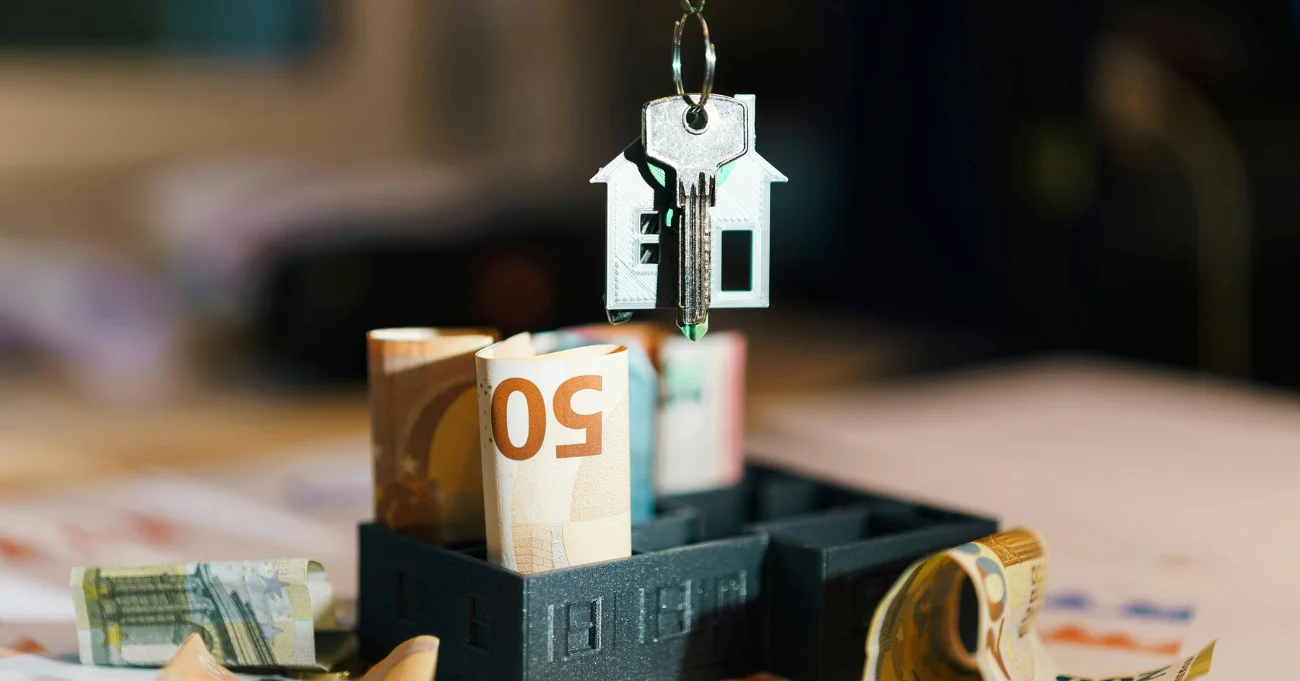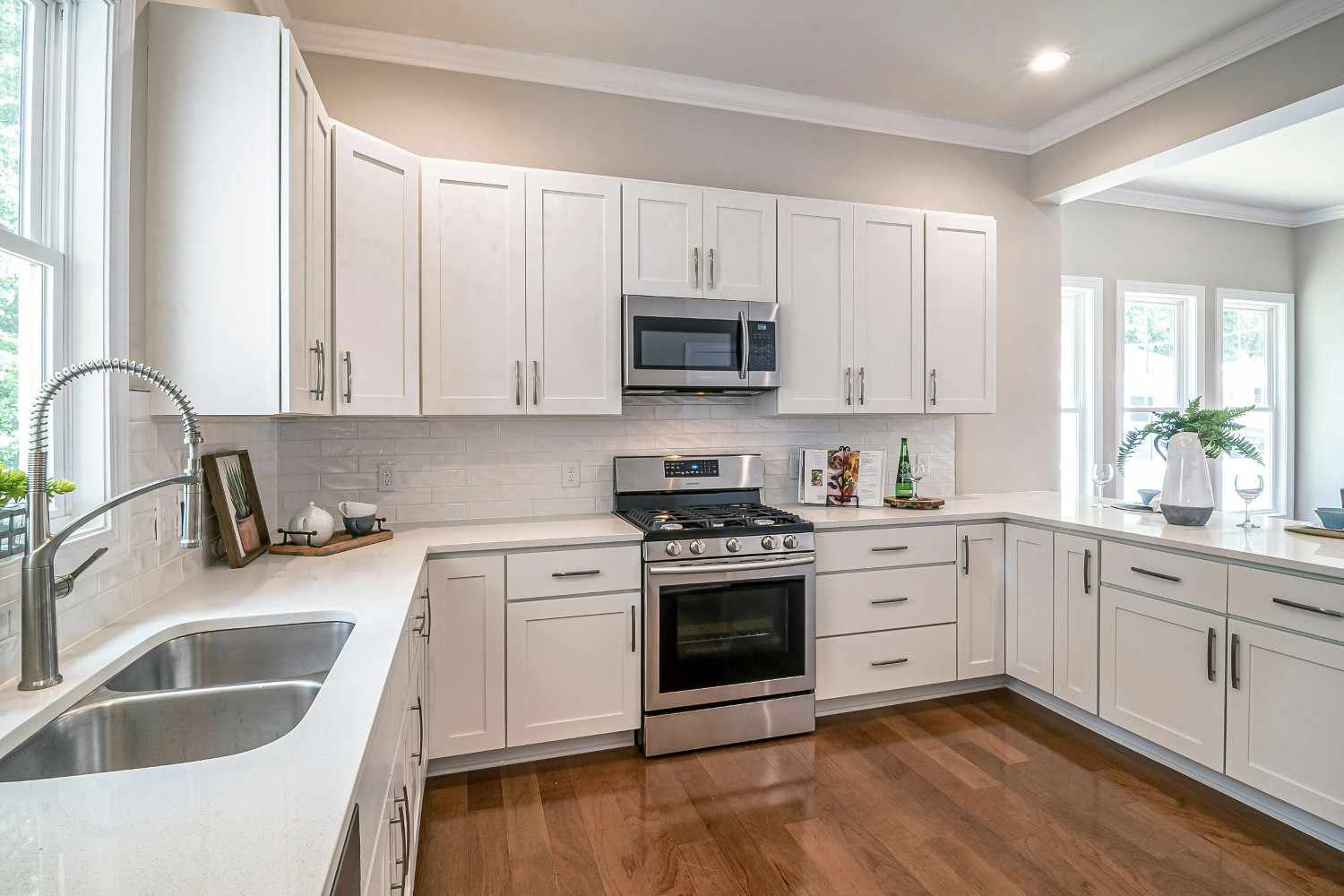Hawaii’s real estate market has always been a topic of interest for investors, homebuyers, and entrepreneurs. The idea of island living, consistent appreciation, and the potential for rental income due to the high profitability of the tourism industry all make purchasing property in Aloha State highly desirable. But with the average house cost in Hawaii continuing to grow, can investors still get their foot in the door, or has the market become too competitive?
At Defy Mortgage, we offer creative financing solutions to help you answer questions like this. From DSCR loans and bank statement loans to FHA loans, our fully customizable loan options can help you navigate Hawaii’s unique market dynamics. With competitive rates and a seamless platform, we make managing your mortgage effortless.
In this guide, we’ll explore the latest home price updates in Hawaii and discuss the factors influencing these costs. We’ll also explore the best investment opportunities across the islands and one of the best financing options investors can use to achieve their goals in the Hawaiian housing market.
Current Average Home Prices in Hawaii (2025 Update)
As of February 2025, the average house cost in Hawaii hovers around $743,200. This is a 4.3% decrease from January’s median sale price, which was $776,200. January’s median price was a rebound from Q4 2024’s dip, which reached $755,900 in December 2024.
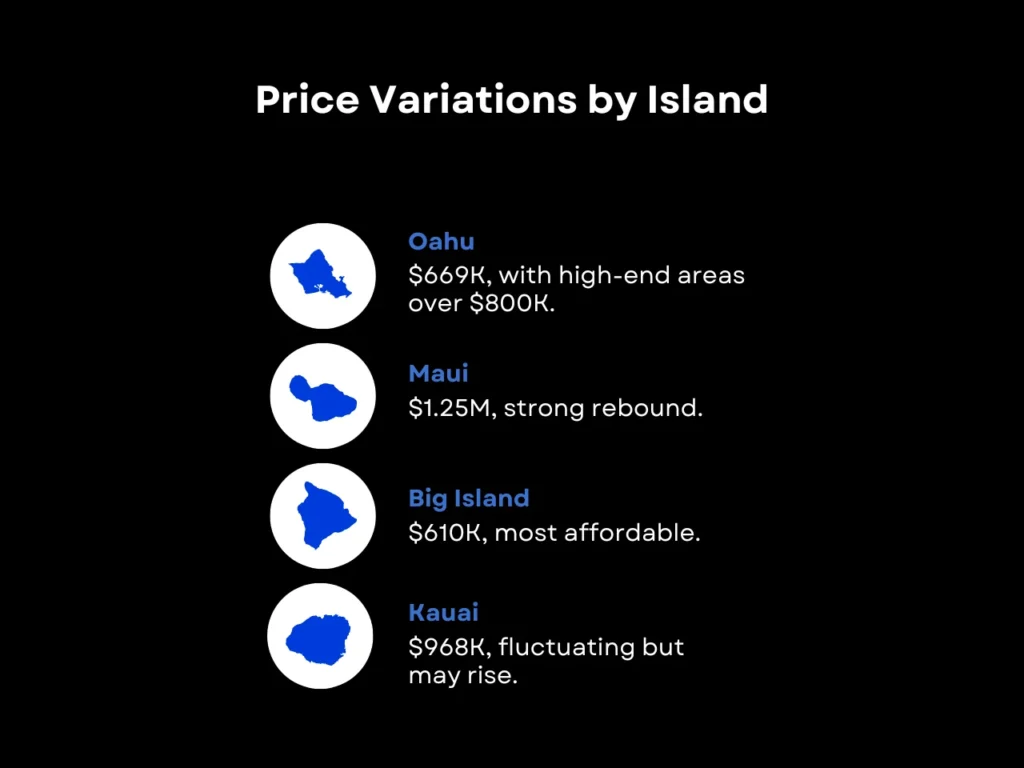
Price Variations by Island
- Oahu: Home to the state capital of Honolulu, Oahu’s median sale price for all home types reached $669,000 in February 2025. This is a 10.8% decrease from the January 2025 price of $750,000, and a 4.5% decrease from the price last year. The more expensive parts of Oahu, however, such as Pearl City on the North Shore, have median sale prices exceeding $800,000.
- Maui: The islands’ luxury market, appreciation has picked back up in Maui, with the median sale price for all home types rising 29.8% in a single month to $1,250,000, after a huge dip in January dropped the price to $962,500. Year-over-year, this is a price increase of 18.8%.
- The Big Island (Hawaii Island): The Big Island is the most affordable of all the islands, with a median sale price of $610,000. This was a 4.98% decrease from January’s median price of $642,000, but a 2.5% increase year-over-year.
- Kauai: Home to Hawaii’s most expensive market to date, Kauai started 2025 strong with a median sale price of $1,194,000 in January, although it is currently in the middle of a dip at around $968,000. That said, the past few months have seen the median price in Kauai rapidly rise and fall, which could be a sign that it will pick back up soon.
Single-Family Homes vs. Condos
Although demand has decreased in places like the Big Island and Kauai, single-family home prices are up across Hawaii as of February 2025. The median sale price for single-family homes has reached $975,500, up 5.3% year-over-year. The total number of detached homes for sale increased 3.7% YoY to 2,751, although new listings are down 7.9% YoY at 522.
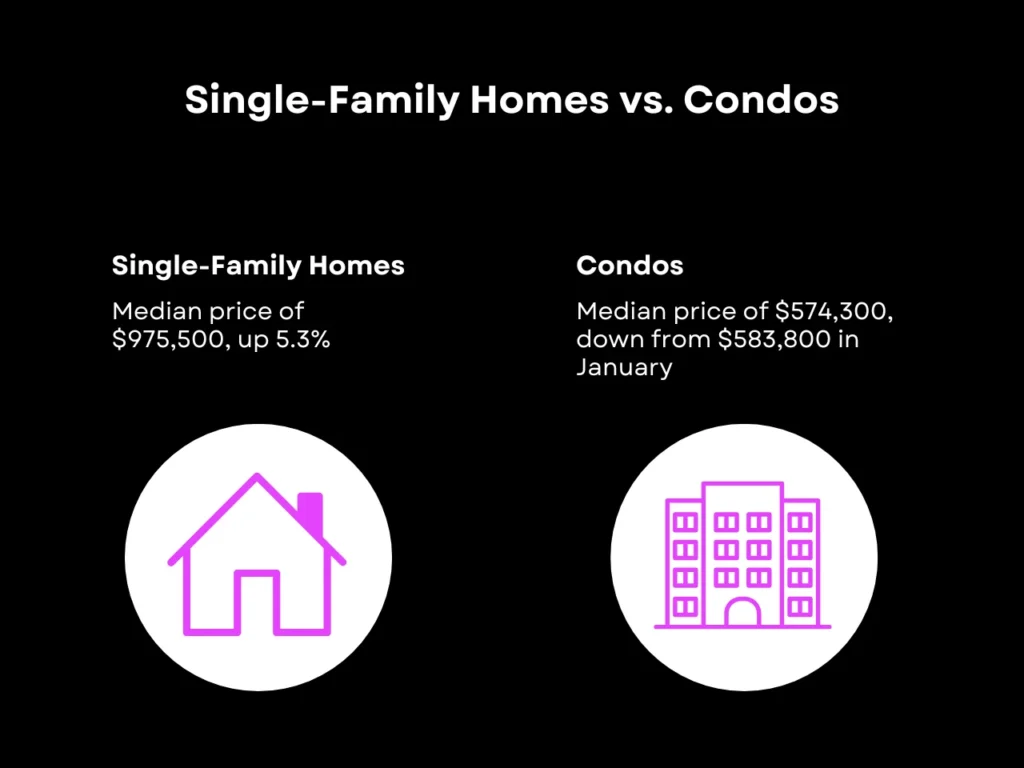
Condominiums, on the other hand, have decreased slightly in sale price after a slight bump at the start of 2025. From $583,800 in January, condos have settled at $574,300, although this is still a 3.9% increase from the previous year.
Condo supply has been on a steep upward trend since the start of 2024, with the number of condos for sale rising 35.5% from 3,100 in February 2024 to 4,201 in February 2025, with 749 of those being new listings, according to Redfin. Condo sales overtook single-family home sales in February 2025, with 381 condos sold to 351 for single-family homes.
Why Hawaii’s Home Prices Are Unique Compared to Mainland Markets
Home prices in Hawaii are known to be among the highest in the United States. This presents both an advantage and a disadvantage. While there is a general upward trend that provides certainty in appreciation, it also makes the cost of entry steeper. Let’s take a look at the factors that make Hawaii home prices unique:
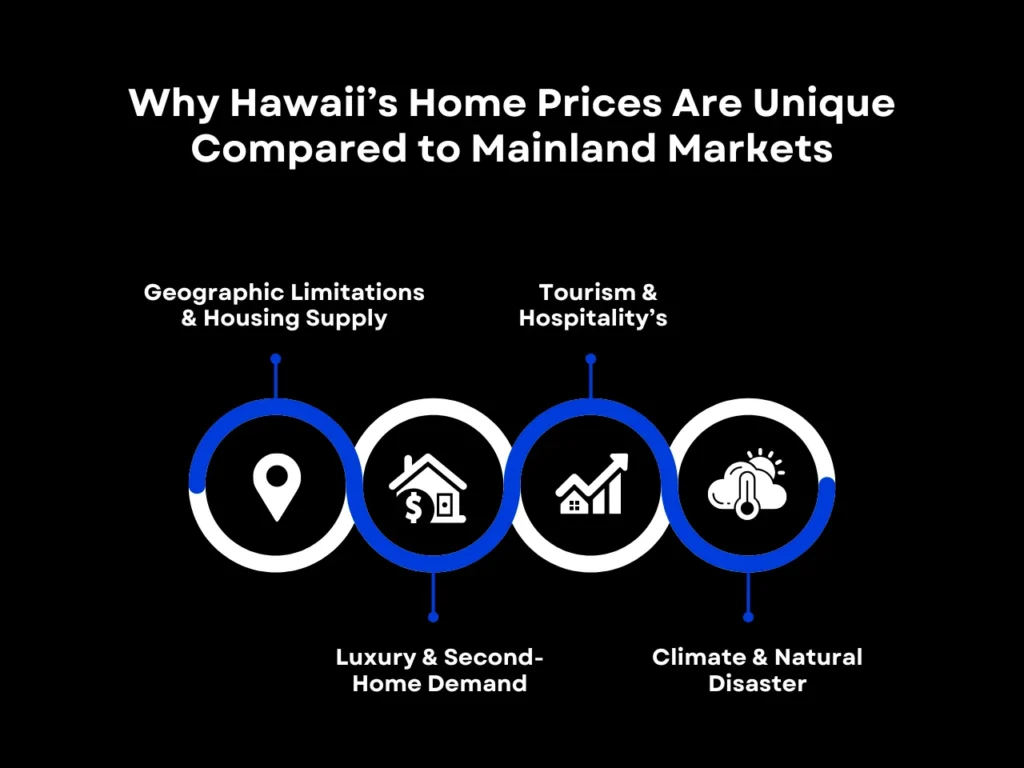
1. Limited Housing Supply
Hawaii has a unique geography. Its islands provide a limited amount of land suitable for development. In addition, the State of Hawaii has implemented zoning laws and development regulations to preserve natural resources, cultural sites, and affordable housing zones for native Hawaiians. As a result, the number of Hawaii real estate listings is limited for both investors and homebuyers.
2. Luxury & Second-Home Buyers Dominate
A quarter of all Hawaii home sales are from out-of-state. Non-resident real estate demand is one of the strongest drivers for the state’s housing market, particularly in its luxury and second-home sectors.
Non-resident investors are often drawn by the state’s reputation for strong long-term appreciation and its appealing lifestyle. This influx of buyers in the high-end market drives prices upward, particularly in sought-after ZIP codes where properties can command multi-million-dollar price tags.
3. Impact of Hawaii’s Tourism & Hospitality Industry
Tourism is Hawaii’s primary industry, and this drives up demand for short-term rentals (STRs) and vacation rentals. A 2023 study from the University of Hawaii found that 30,000 housing units in Hawaii were listed as STRs–about 5% of the state’s total housing stock. Proximity to tourist spots is also a selling point for homebuyers who work in the hospitality industry and those in the market for second homes.
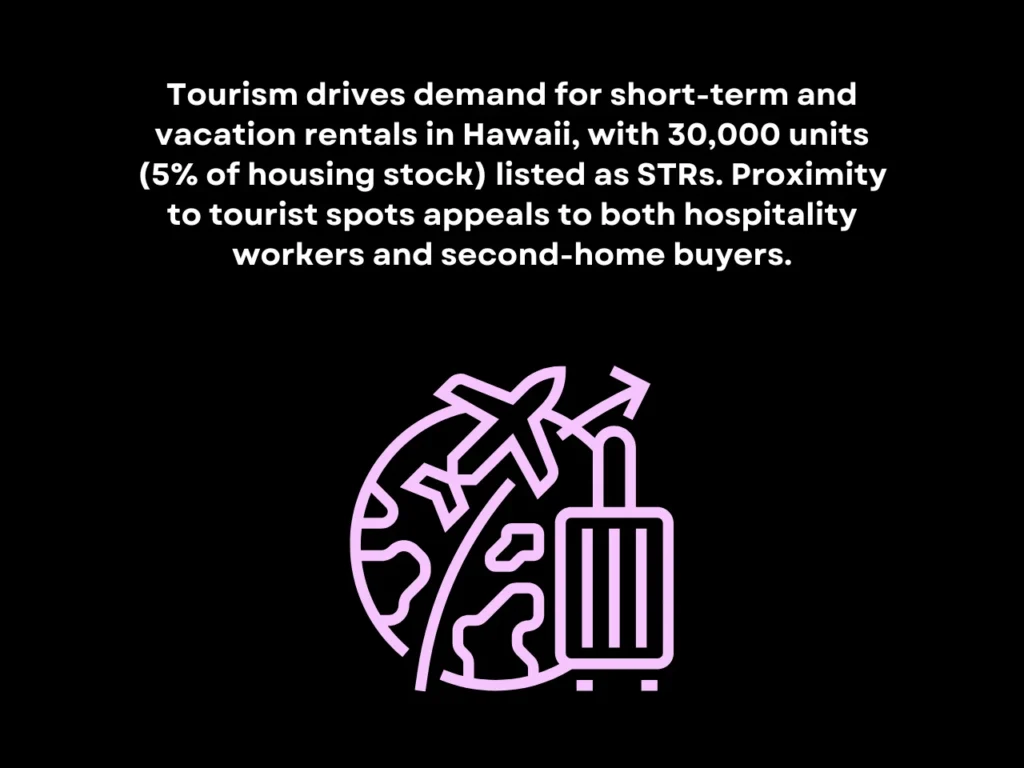
4. Climate & Natural Disaster Considerations
Hawaii is vulnerable to natural events like volcanic activity, hurricanes, and rising sea levels. This has historically impacted real estate values. The wildfires in Maui in 2023 further reduced the low housing inventory on the island and led to increased insurance premiums. However, it also increased rents and home values. The returns for investors held strong.
Where Are the Best Investment Opportunities?
The best investment opportunities for you will ultimately depend on your desired investment horizon, risk appetite, and financial resources. That said, each island lends itself particularly well to certain types of investments.
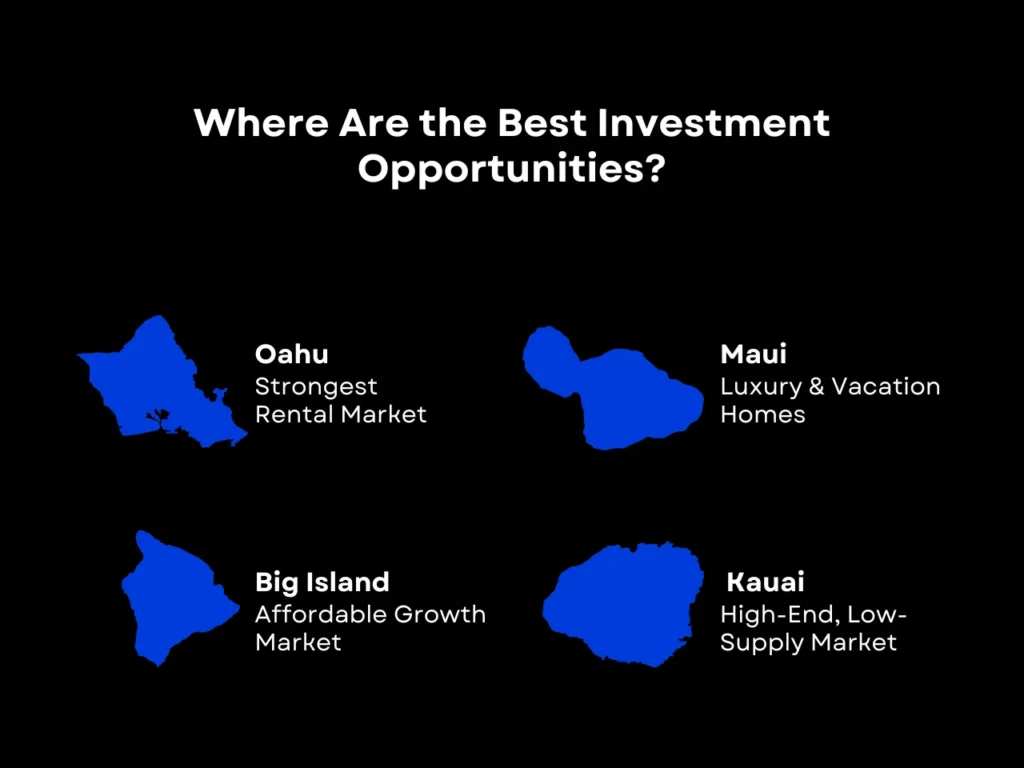
Disclaimer: This is not financial or investment advice, but rather an informational overview based on current market data and trends. For financial advice, please consult with a financial advisor, and for real estate advice, your real estate agent.
1. Oahu – Strongest Rental Market
Oahu is the largest and most populated island. Home to the state capital of Honolulu, it is a bustling hub of activity, generating the most demand for rental properties. Over 40% of all Oahu residents rent instead of own, and with Honolulu being a center for business, finance, hospitality, and military defense, Oahu has a highly competitive commercial real estate market as well.
Oahu is also extremely popular with tourists, particularly in areas such as Honolulu and Waikiki, which are in high demand for both long-term and short-term rentals. STRs were on the rise at the beginning of 2025, with a median occupancy rate of 89%.
2. Maui – Luxury & Vacation Homes
Regions such as Kihei, Lahaina, and Wailea have seen rising home values, attracting luxury buyers. In particular, regions like Kihei, Lahaina, and Wailea are experiencing remarkable growth. The average home value in Kihei reached $1,115,227 by the end of January 2025, up 1.1% year-over-year, according to Zillow. As shown by the multiple listing service (MLS) provided by the REALTORS Association of Maui, places like Wailea and Makena show even greater growth, with the average single-family home in Wailea reaching heights of nearly $5,000,000 in Q4 2024, over $1,000,000 more than the price in 2022.
3. Big Island – Affordable Growth Market
Barring high-end neighborhoods such as Kailua-Kona, the Big Island offers lower entry prices compared to Oahu and Maui, making it ideal for long-term investors looking for more affordable acquisitions. Single-family homes, in particular, are much more affordable on the Big Island, with median sale prices around $568,000, compared to $1,396,000 in Maui and $1,150,000 in Oahu, as of February 2025.
4. Kauai – High-End, Low-Supply Market
Between limited new developments due to zoning laws, a reputation as Hawaii’s most beautiful island, and space being a premium, Kauia offers strong appreciation potential. Known as “The Garden Isle”, Kauai is characterized by its lush greenery, considered more vibrant than any of the other islands. This has made it highly popular among homebuyers looking for a semi-secluded tropical paradise home.
How DSCR Loans Help Investors Overcome High Prices
In Hawaii’s high-priced markets, it can be difficult to secure conventional financing for an investment property. Debt service coverage ratio (DSCR) loans provide several advantages that can help investors sidestep those difficulties:
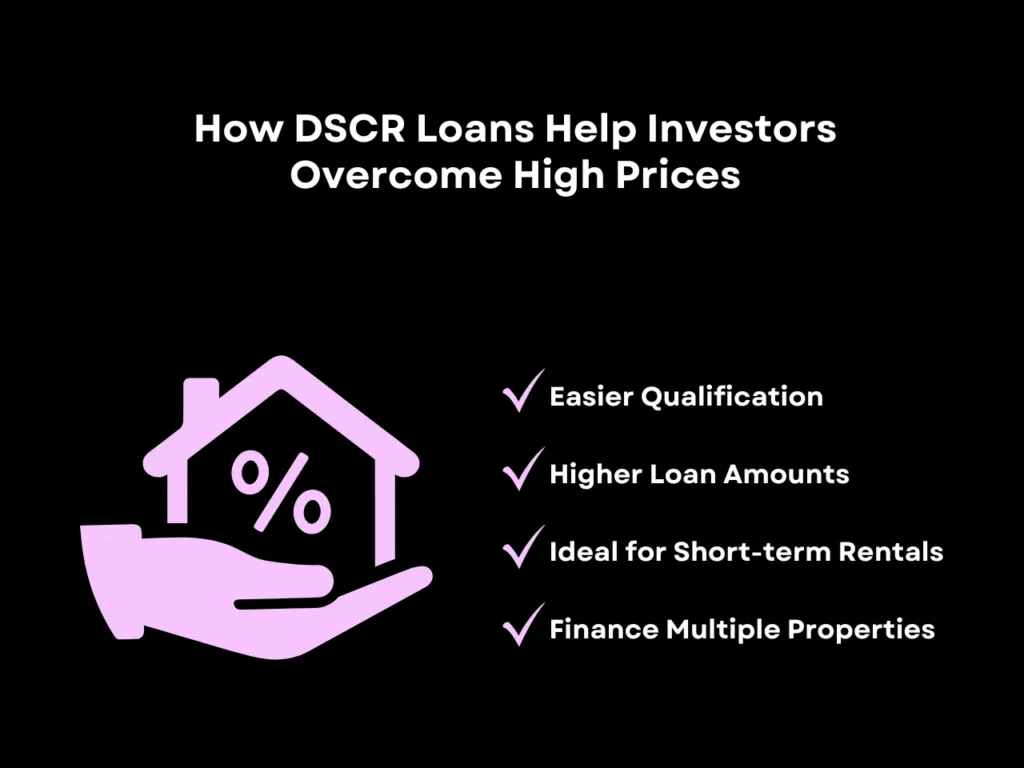
- Easier Qualification: Qualification for DSCR loans is based on the property’s cash flow potential, not how much you earn or your debt-to-income (DTI) ratio. Credit score is much less of a concern–at Defy, we only look for a minimum FICO score of 620.
- Higher loan amounts: Since loan terms are based on property income potential instead of your personal financials, you can get much higher loan amounts than you could with a conventional loan as long as you select a promising property. This can expand your options to higher-end acquisitions and give you an edge during the bidding phase.
- Ideal for short-term rentals: DSCR loans are particularly suited for Airbnb and Vrbo STRs, especially those that can make more income during peak months than what long-term rentals can make in a year. Tools like AirDNA’s STR calculator can easily show you the predicted STR revenue for a particular property, which can be used to strengthen your DSCR profile and get better terms.
- Finance multiple properties: There is no hard cap on the number of D111SCR loans you can have active at any given time. This suits strategies that involve using more affordable properties as an entry point, such as those on the Big Island, and quickly pivoting to higher-end acquisitions once the initial investment has made enough to reinvest.
- Rapid portfolio expansion: Each DSCR loan is self-contained, only accounting for the income potential of the property being financed. This enables you to quickly expand your portfolio without being held back by the performance of your other investments. For example, DSCR loans can let you rapidly accumulate multi-family homes and STRs in Oahu, which can be paired with options such as interest-only payments to allow you to quickly save up for a down payment on a vacation rental in Maui.
If you’re looking to leverage DSCR in Hawaii, start by shortlisting a few ideal candidates for purchase based on their cash flow potential. You can estimate a property’s cash flow by calculating its net operating income (NOI), which is its income after deducting all operating expenses, and then dividing that by the total debt obligations. The resulting ratio is the DSCR, and a higher DSCR leads to better terms.
Key Takeaway
Despite various economic fluctuations in recent months, the Hawaii housing market remains resilient. The average house cost in Hawaii is on the up, reflecting the state’s consistent growth. However, with an increasing number of houses for sale in Hawaii, experts expect price growth to slow, which can be a positive for investors looking to enter the market.
If you’re considering investing in Hawaii real estate, remember that while each island is particularly suited for specific types of investments, it’s best to consult services such as MLS Hawaii to pinpoint the ones that align closest with your goals.
Ready to explore your DSCR financing options in the Hawaii property market? Get started with Defy today, and let’s work out your best entry strategy.

